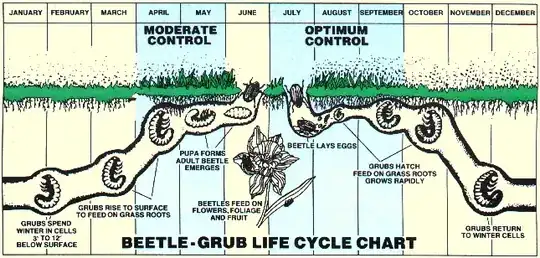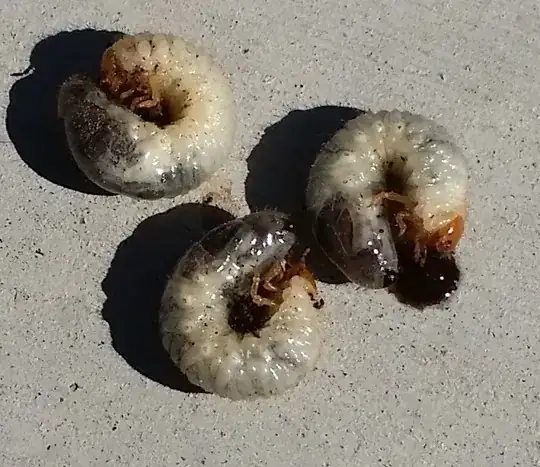Those are grubs. There are a lot of kinds of grubs, though, and they look so similar, you often can only tell them apart by their rear ends (seriously, see below)

They feed on roots (usually turf, but also trees, perennials, and other plants) as larvae, and then emerge from the ground as beetles, which feed on the leaves. I think they might be masked chafer beetles. You don't yet have Japanese beetles in Phoenix.
Methods of control:
- Chickens work after a till, but this isn't practical unless you intend to till the entire area.
- Adult beetle traps (pheromonal/floral) have worked for me in reducing the amounts of adults.
- Insecticides are the usual method of control. You may not want to use them in an orchard, if you want to be perfectly organic. I use imidacloprid for grub control in lawns. It's a systemic (taken in by the plant, so when the grubs eat it, they die) neurotoxin.
For grub control, timing is key. The grubs live low in the soil most of the year, below where you can effectively treat. They come up near the soil before pupating, and then when the adults lay eggs, the new larvae start out near the surface before going down. So you need to apply right in that pupae-flight-egg window.
Here's a helpful chart. It may vary according to your location:

Here is some additional information on grubs:



